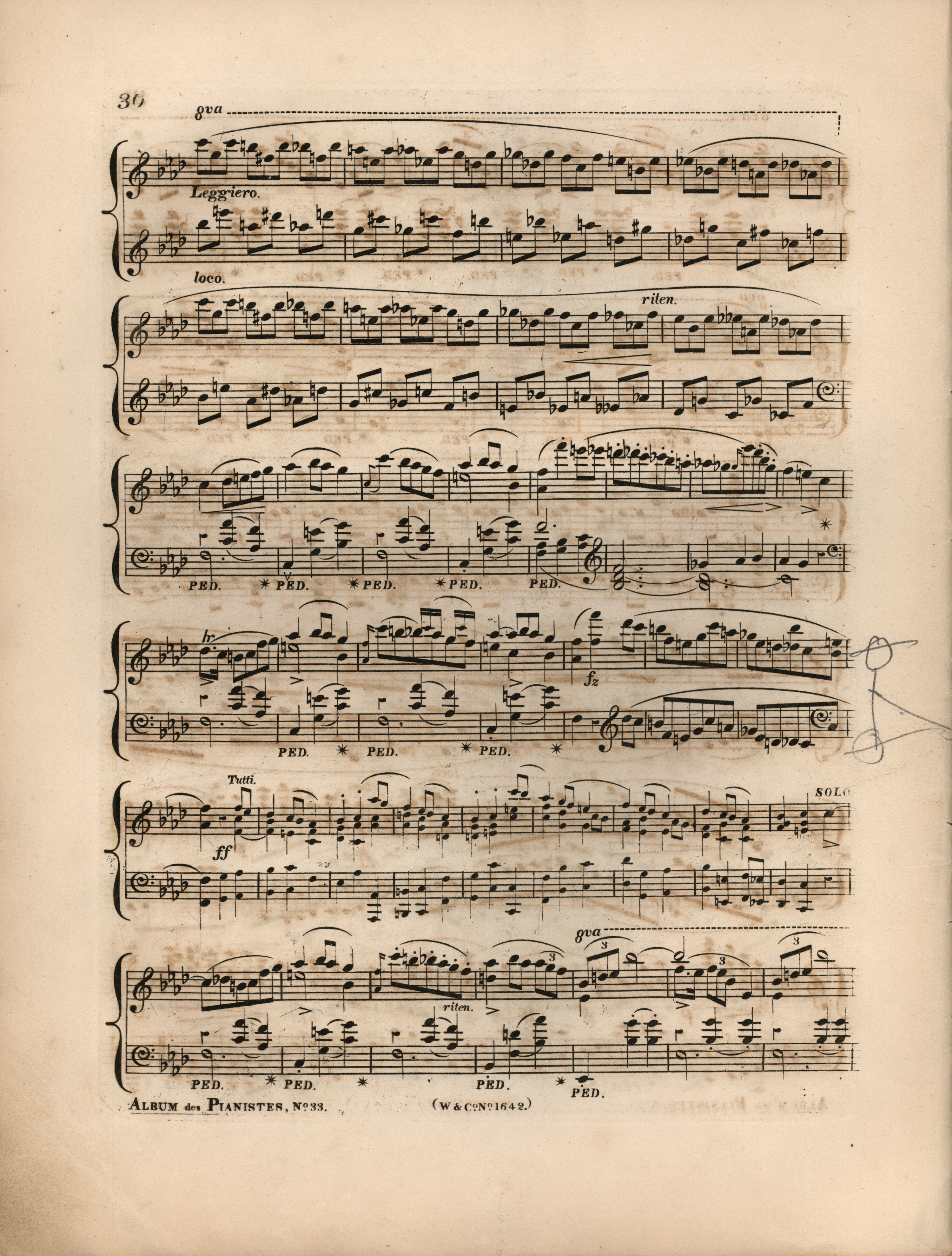Op. 2, Variations in B♭ major
Op. 10, 12 Etudes
Op. 11, Concerto in E minor
Op. 21, Concerto in F minor
Op. 22, Polonaise in E♭ major
Op. 24, 4 Mazurkas
Op. 25, 12 Etudes
Op. 26, 2 Polonaises
Op. 27, 2 Nocturnes
Op. 28, 24 Preludes
Op. 30, 4 Mazurkas
Op. 35, Sonata in B♭ minor
Op. 50, 3 Mazurkas
Op. 63, 3 Mazurkas
Op. 64, 3 Waltzes
(Op. 4), Sonata in C minor




Op. 21, Concerto in F minor, Mvt III
Chopin's intention concerning the placement of the accent is uncertain. The change of its position in GE (→FE→EE) is almost certainly of a random nature, since in the version of A (→GE), in which there is a sole a 2 at the beginning of the bar, it does not influence the meaning of this sign. After adding the d2 note in FE (→EE), the position of the accent may suggest accenting the bottom or top note of the d2-a
2 at the beginning of the bar, it does not influence the meaning of this sign. After adding the d2 note in FE (→EE), the position of the accent may suggest accenting the bottom or top note of the d2-a 2 fifth. In the main text we give an accent in the place where Chopin saw it while proofreading FE.
2 fifth. In the main text we give an accent in the place where Chopin saw it while proofreading FE.
Compare the passage in the sources »
category imprint: Differences between sources
issues: Inaccuracies in GE
notation: Articulation, Accents, Hairpins



